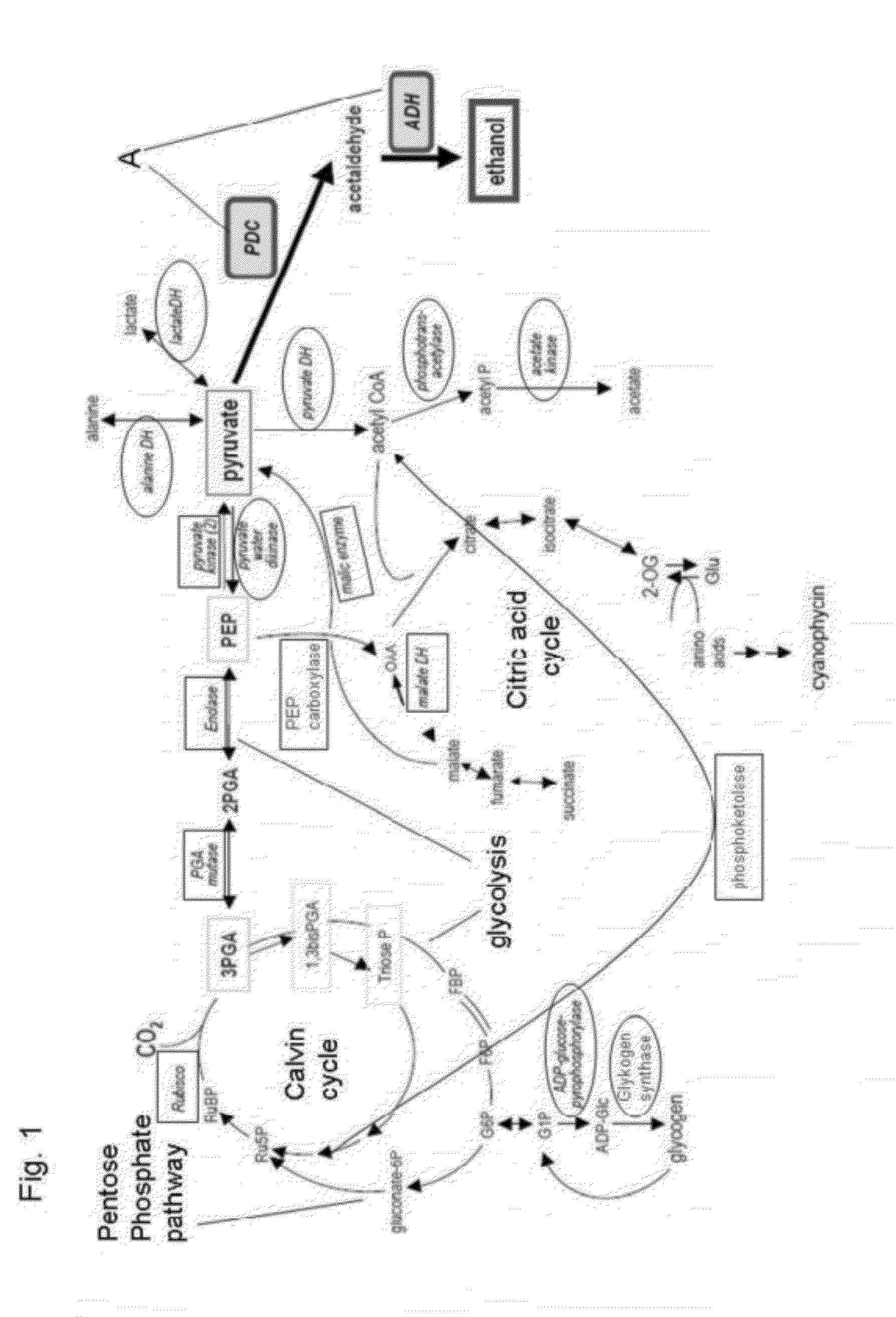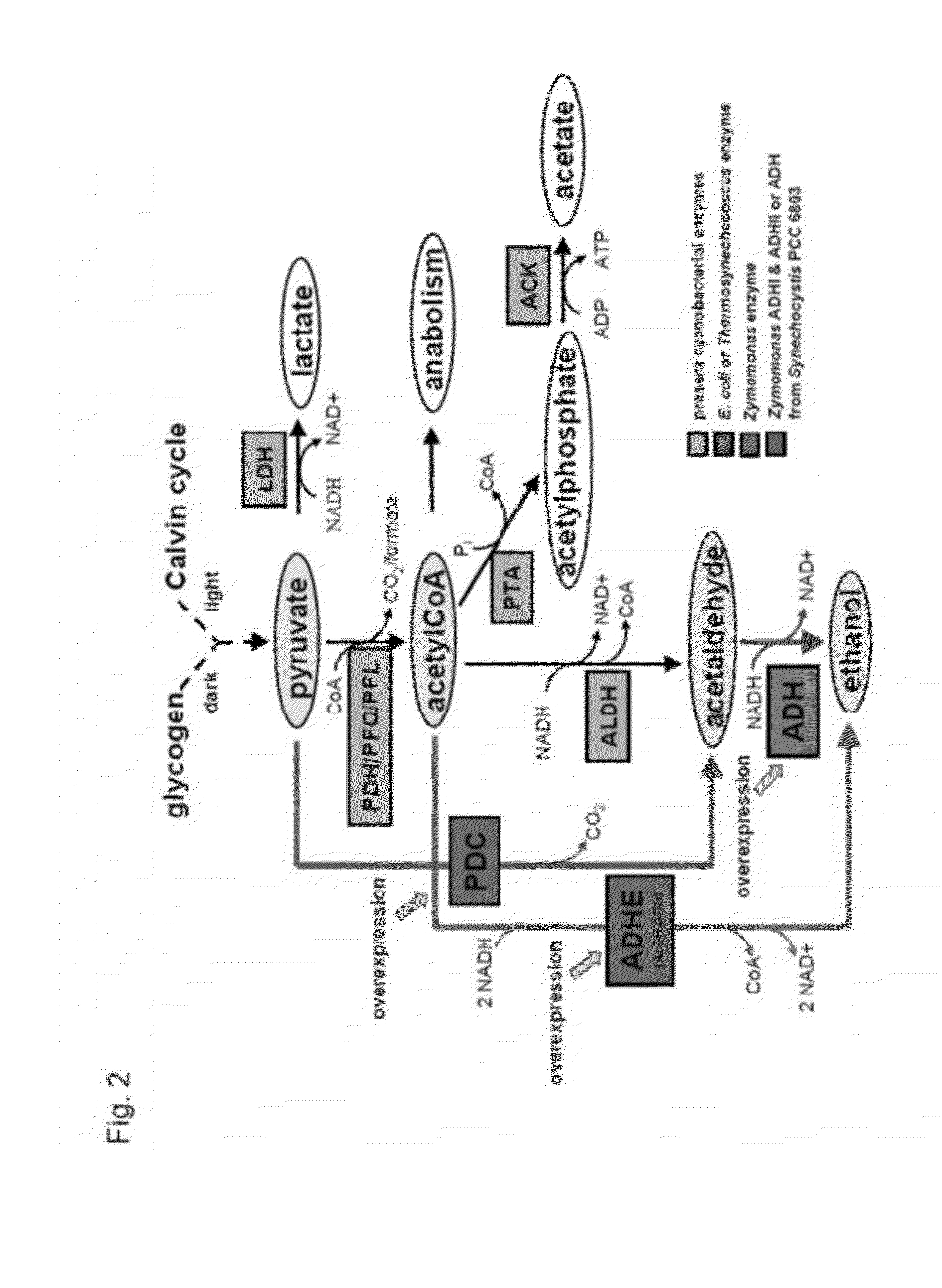Metabolically Enhanced Photoautotrophic Ethanol Producing Host Cells, Method For Producing The Host Cells, Constructs For The Transformation Of The Host Cells, And Method Of Producing Ethanol Using The Host Cells
- Summary
- Abstract
- Description
- Claims
- Application Information
AI Technical Summary
Benefits of technology
Problems solved by technology
Method used
Image
Examples
Embodiment Construction
[0139]In the following the inventions will be explained in more detail with reference to figures and certain embodiments:
[0140]FIGS. 1 and 3 depict general schemes of metabolic pathways in Cyanobacteria with marked enzymes for overexpression and down-regulation or knock-out for the increase of biosynthesis of different metabolic intermediates, in particular acetyl-CoA and pyruvate.
[0141]FIG. 2 shows a flow chart including some ethanologenic enzymes for ethanol production.
[0142]FIG. 1 shows some general metabolic pathways in cyanobacteria as a non-limiting example. In particular the
[0143]Calvin cycle as the light independent part of the photosynthesis is shown starting with the carbon dioxide fixation reaction catalyzed by the enzyme RubisCO. Further the glycolysis pathway, the pentose phosphate pathway and the citric acid cycle are shown. The general metabolic pathways depict boxed and circled enzymes, whose activity or affinity can be changed as part of at least one first metabolic...
PUM
| Property | Measurement | Unit |
|---|---|---|
| Fraction | aaaaa | aaaaa |
| Fraction | aaaaa | aaaaa |
| Fraction | aaaaa | aaaaa |
Abstract
Description
Claims
Application Information
 Login to View More
Login to View More - R&D
- Intellectual Property
- Life Sciences
- Materials
- Tech Scout
- Unparalleled Data Quality
- Higher Quality Content
- 60% Fewer Hallucinations
Browse by: Latest US Patents, China's latest patents, Technical Efficacy Thesaurus, Application Domain, Technology Topic, Popular Technical Reports.
© 2025 PatSnap. All rights reserved.Legal|Privacy policy|Modern Slavery Act Transparency Statement|Sitemap|About US| Contact US: help@patsnap.com



